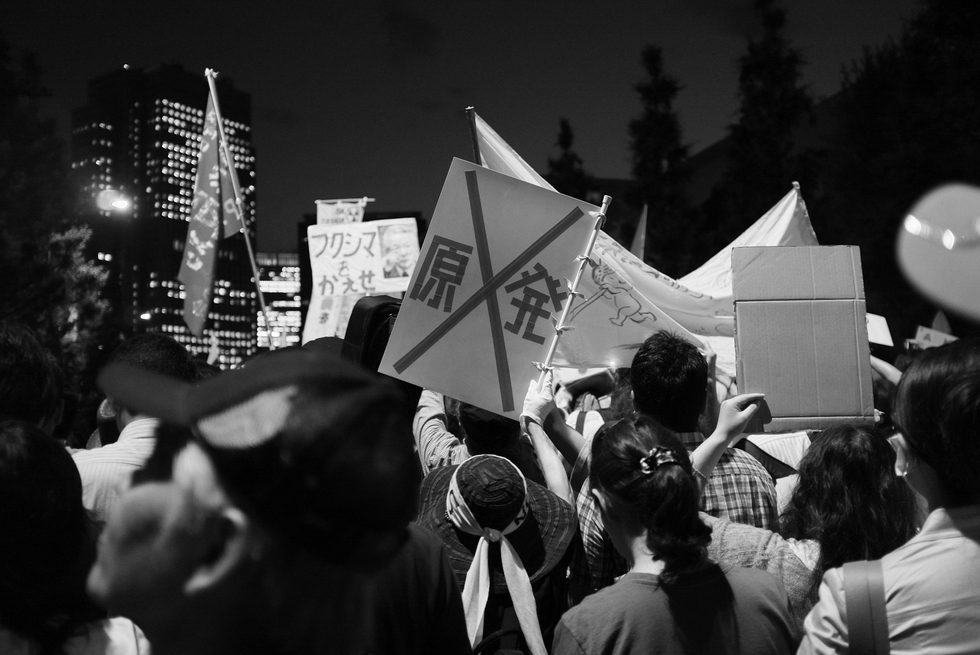Time and Life in Fukushima
From the Series: 3.11 Politics in Disaster Japan: Ten Years Later
From the Series: 3.11 Politics in Disaster Japan: Ten Years Later

Summer 2015, four years after the disaster, I headed to Fukushima with a friend to see what we could of the region. Having contracted with someone offering to give guided tours, we spent three hours in his van, traversing the ravaged landscape, pockmarked by the shards of ruined habitation and the piles, everywhere present, of blue polyurethane bags of contaminated soil. Eventually, we stopped at the man’s home, still standing but forbidden to be occupied as it fell within the mandatory evacuation zone. But, he’d be back, he told us firmly: waiting for the time then predicted to be five years in the future, when he would farm again on this land so deeply rooted in him. The thought of abandoning it was unthinkable, even if this meant staying for the meantime in a single room nearby, far away from his wife and adult children who had left immediately for Tokyo and would never come back. A Fukushima farmer, making a living by taking folks like us on disaster tours, actively waiting to remake a life—however that may be—on this soil. —Anne Allison
In 2020, nine years after the disaster, I was doing my fieldwork in a preschool where children commute three hours daily from Fukushima for playing on less risky grounds. Before the disaster, the preschool was located in Fukushima, where all the places were open to daily adventures. In the wake of the disaster, the children disappeared from the street, sheltered elsewhere through networks of relatives and friends. Two months later, a six-year-old boy came back, and the preschool re-opened for him, now as an indoor shelter. One day, the boy said that he would come back to Fukushima sixty years later as an old man so he could play like he used to before. Where had he come up with this figure, parents and teachers wondered. But what they knew was that the boy was counting the days of his lost childhood, as an old man in his imagination. This became a call for adults to experiment with building a playground nearby. Because the present cannot be lived sixty years down the road. Growing out of the timeliness of the disaster, the preschool remains open today for the children who came into this world after the disaster. As a place where something larger than the disaster may grow—here and now. —Jieun Cho
Jieun Cho conducted fieldwork in Fukushima and is now writing up her dissertation at Duke. She and Anne Allison have been working on this subject together and this short essay is collaborative.
Read Anne Allison’s essay “Relief Work-On the Ground,” published July 26, 2011.